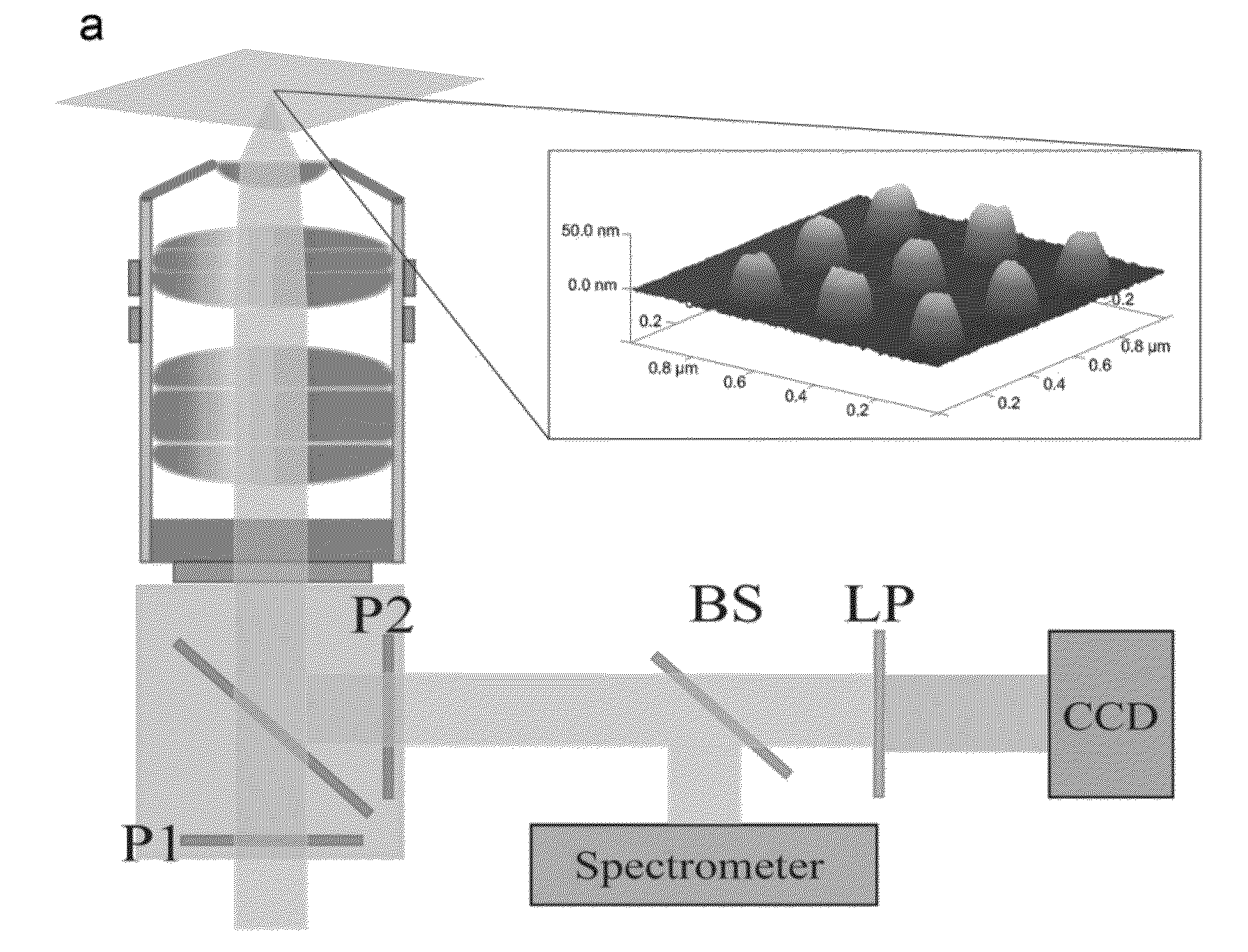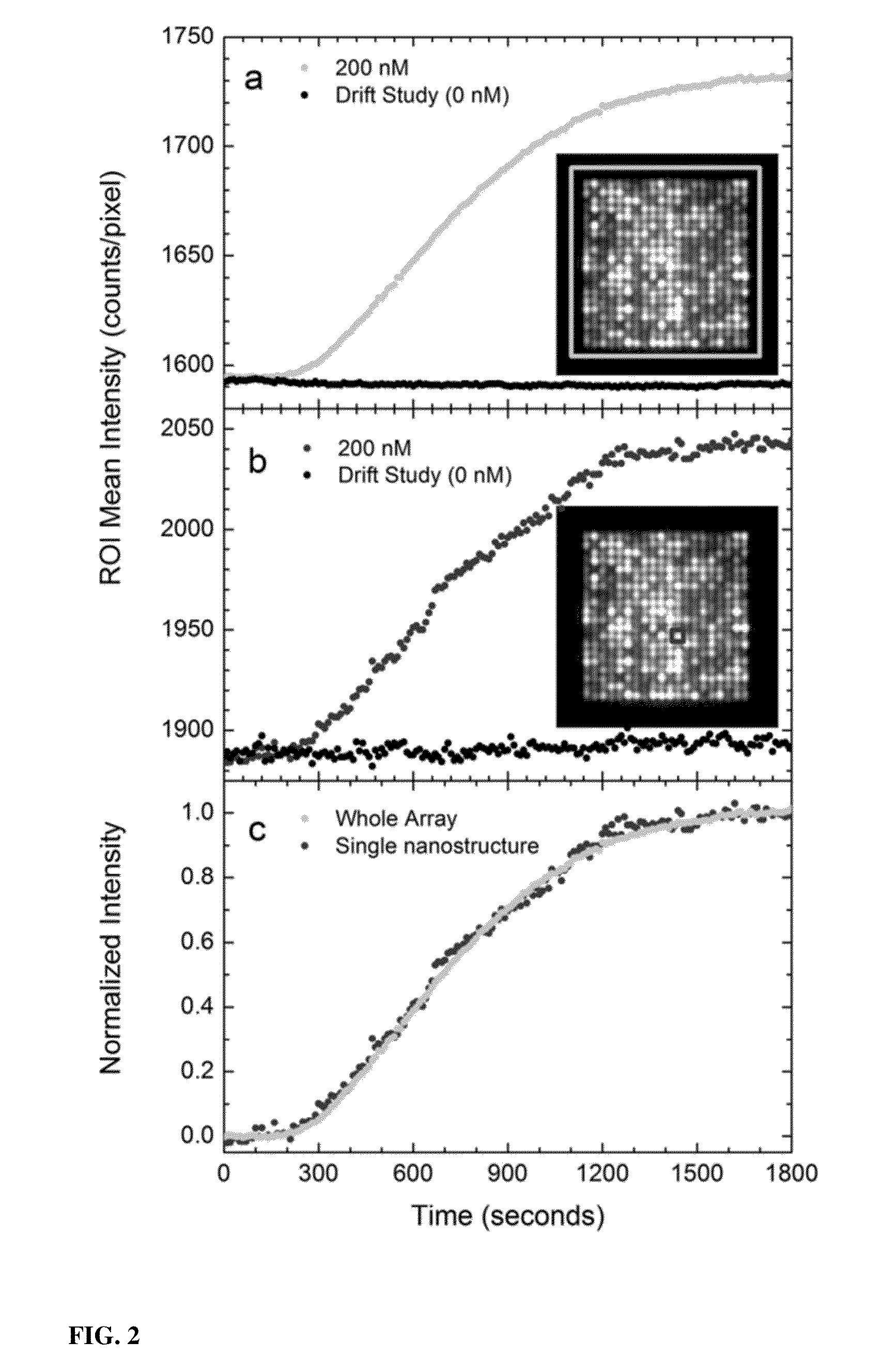Calibrating single plasmonic nanostructures for quantitative biosening
- Summary
- Abstract
- Description
- Claims
- Application Information
AI Technical Summary
Benefits of technology
Problems solved by technology
Method used
Image
Examples
Embodiment Construction
[0022]The present invention provides a localized surface plasmon resonance (LSPR) imaging and analysis technique that enables the calibration of hundreds of individual gold nanostructures in parallel. The calibration enables the mapping of the fractional occupancy of surface-bound receptors at individual nanostructures with a temporal resolution of 225 ms. Some features of this invention are (1) the fabrication of the arrays by electron-beam lithography for the production of highly uniform nanostructures, as confirmed by both size and spectral characterizations (2) the simultaneous measurement of spectra and imagery and (3) the combination of the spectral and imagery data into an analysis formalism that enables the determination of the fractional occupancy of surface bound receptors at individual nanostructures, f(r, t), where r denotes the location on the substrate and t denotes time. In addition, the technique is fully compatible with fluorescence and DIC microscopy techniques and...
PUM
 Login to View More
Login to View More Abstract
Description
Claims
Application Information
 Login to View More
Login to View More - R&D
- Intellectual Property
- Life Sciences
- Materials
- Tech Scout
- Unparalleled Data Quality
- Higher Quality Content
- 60% Fewer Hallucinations
Browse by: Latest US Patents, China's latest patents, Technical Efficacy Thesaurus, Application Domain, Technology Topic, Popular Technical Reports.
© 2025 PatSnap. All rights reserved.Legal|Privacy policy|Modern Slavery Act Transparency Statement|Sitemap|About US| Contact US: help@patsnap.com



